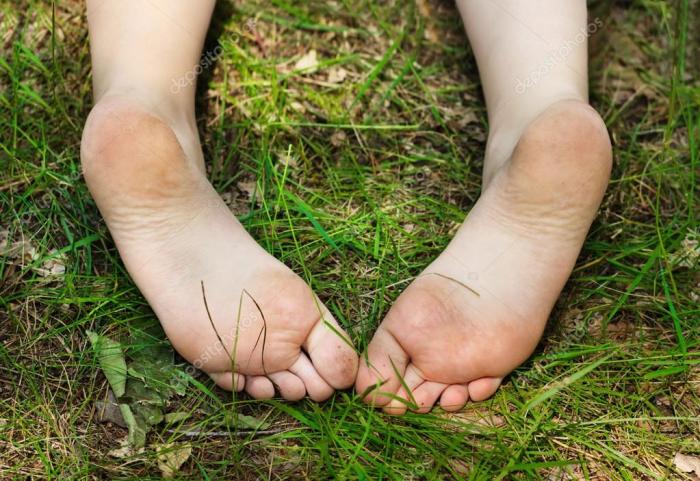Embarking on a journey into the captivating world of The Family of Little Feet, this exploration delves into the historical origins, cultural significance, and profound impact of foot binding in China. Unraveling the intricate tapestry of social, economic, and psychological factors that shaped this practice, we embark on a quest to understand its lasting legacy and the changing attitudes towards it in contemporary society.
From the physical deformities and health issues endured by women to the psychological effects and cultural symbolism associated with small feet, this discourse sheds light on the multifaceted nature of foot binding. We examine how it served as a means of social control and female subordination, while also exploring its artistic depictions and literary references that have shaped perceptions and interpretations of this practice throughout history.
Historical Context of the Family of Little Feet

The practice of foot binding in China has a long and complex history. It is believed to have originated during the Tang Dynasty (618-907 AD), when it was seen as a sign of beauty and refinement among the upper classes.
Over time, foot binding became more widespread, and by the Qing Dynasty (1644-1912), it was practiced by women of all social classes. The ideal of a bound foot was a “lotus foot,” which was no more than three inches long and had a distinctive arched shape.
Social Factors
There were several social factors that contributed to the practice of foot binding. One was the belief that it made women more attractive to men. Another was the belief that it made women more submissive and obedient.
The Family of Little Feet is a heartwarming story about the adventures of a group of young mice. If you’re looking for the answer key to the popular French textbook “Eric a disparu”, you can find it here . Back to the Family of Little Feet, these little mice face many challenges, but they always stick together and help each other out.
Economic Factors
There were also economic factors that contributed to foot binding. One was that it made women less likely to work outside the home. This was seen as desirable by many families, as it meant that women could be kept at home to take care of the children and the household.
Physical and Psychological Impacts of Foot Binding

Foot binding was a practice that caused severe physical and psychological harm to women in China for centuries. The process of binding the feet from a young age resulted in a number of physical deformities and health issues.
Physical Deformities and Health Issues
- Broken bones:The process of foot binding involved breaking the bones of the feet, causing them to bend unnaturally. This could lead to permanent deformities, such as clubfoot, hammertoes, and bunions.
- Nerve damage:The tight binding of the feet could damage the nerves, leading to numbness, pain, and difficulty walking.
- Infection:The feet were often bound so tightly that they became infected. This could lead to serious health problems, including gangrene and amputation.
Psychological Effects
In addition to the physical pain and suffering, foot binding also had a number of psychological effects on women. The practice was often seen as a way to control women and limit their mobility. Women who had their feet bound were often confined to the home, unable to participate in many activities that were available to men.
- Depression:Foot binding could lead to depression and anxiety in women who felt trapped and unable to live their lives as they wished.
- Low self-esteem:The practice of foot binding was often seen as a way to make women more attractive to men. However, many women who had their feet bound felt ashamed of their deformed feet and had low self-esteem.
- Body dysmorphic disorder:Foot binding could lead to body dysmorphic disorder, a condition in which people are preoccupied with their appearance and believe that they have a physical defect.
Cultural Symbolism and Representation: The Family Of Little Feet

In Chinese society, small feet held profound cultural significance. They were a symbol of beauty, refinement, and social status. Women with bound feet were considered more desirable and marriageable, as they conformed to the societal ideal of femininity and elegance.
Foot Binding as Social Control
Foot binding also served as a means of social control and female subordination. By restricting women’s mobility and limiting their physical capabilities, it reinforced the patriarchal system that valued women primarily for their domestic roles and their ability to bear children.
Bound feet became a visible marker of women’s subservience and their dependence on men.
Artistic Depictions and Literary References

Foot binding has been a subject of artistic expression and literary exploration throughout history. These works have offered diverse perspectives on the practice, shedding light on its cultural significance and the complex experiences of those who underwent it.
In Chinese art, foot binding has been depicted in paintings, sculptures, and ceramics. One famous example is the painting “The Lady with Bound Feet” by Tang Yin, which portrays a woman with tiny feet, adorned with elaborate shoes and ribbons.
The painting captures the beauty and sensuality associated with foot binding, while also hinting at the pain and discomfort it entailed.
Literature
Foot binding has also been a prominent theme in Chinese literature. In the novel “The Dream of the Red Chamber” by Cao Xueqin, the protagonist Lin Daiyu is described as having “golden lilies,” a term used to refer to bound feet.
The novel explores the social pressures and expectations surrounding foot binding, as well as its impact on women’s lives and relationships.
In Western literature, foot binding has been depicted in works such as “The Good Earth” by Pearl S. Buck and “Snow Flower and the Secret Fan” by Lisa See. These novels provide insights into the cultural and social forces that shaped the practice, as well as the personal struggles and triumphs of women who experienced it.
Modern Perspectives and Legacy

In contemporary China, attitudes towards foot binding have undergone a significant transformation. The practice is now widely condemned as a form of gender-based oppression and violence against women.
The lasting impact of foot binding on Chinese culture and society is multifaceted. It has left a legacy of discrimination against women, as well as a complex and ambivalent relationship with the female body.
Cultural Symbolism and Representation, The family of little feet
Foot binding has become a potent symbol of the subjugation of women in Chinese history. It is often depicted in art and literature as a means of expressing the suffering and resilience of Chinese women.
In modern China, foot binding is sometimes seen as a cultural curiosity or a symbol of national identity. However, it is important to remember that it was a practice that caused immense pain and suffering to millions of women.
FAQ Section
What were the main reasons for foot binding?
Foot binding was primarily driven by cultural and aesthetic ideals that valued small feet as a symbol of beauty and desirability. It also served as a means of social control, restricting women’s mobility and reinforcing their subordinate status within society.
What were the physical consequences of foot binding?
Foot binding caused severe physical deformities, including stunted growth, dislocated bones, and nerve damage. It led to chronic pain, impaired mobility, and increased susceptibility to infections.
How did foot binding affect women’s lives?
Foot binding had a profound impact on women’s lives. It restricted their physical activities, limited their opportunities for education and employment, and reinforced their dependence on men.